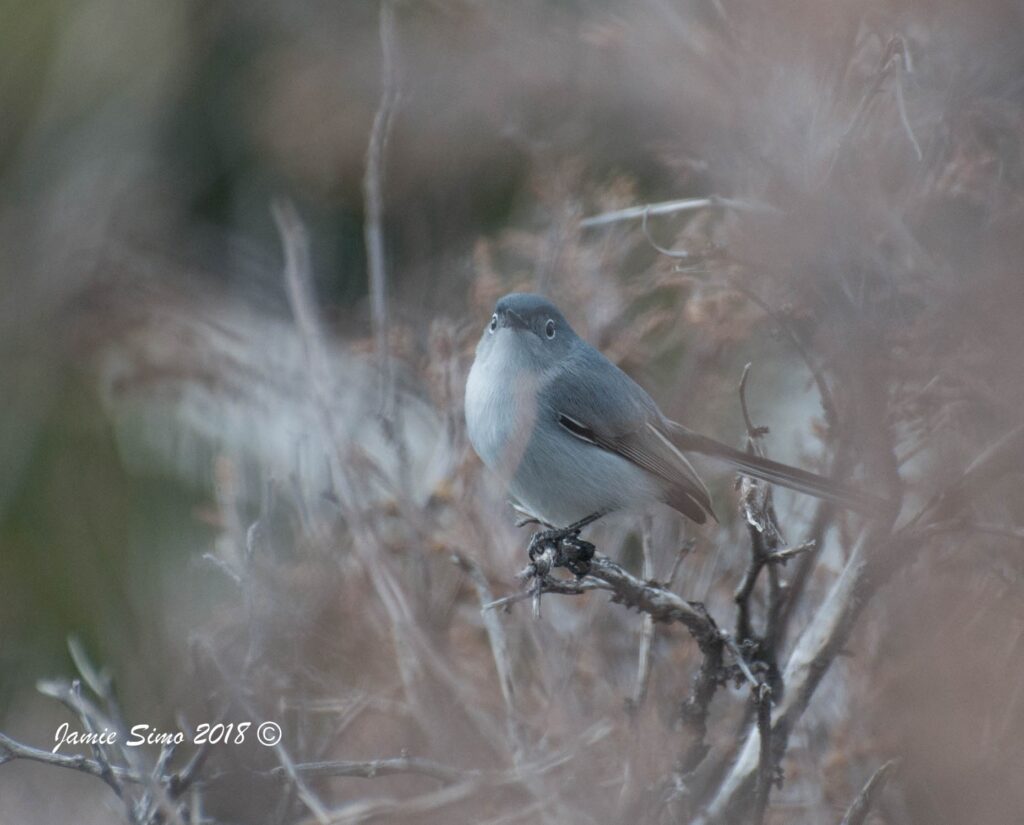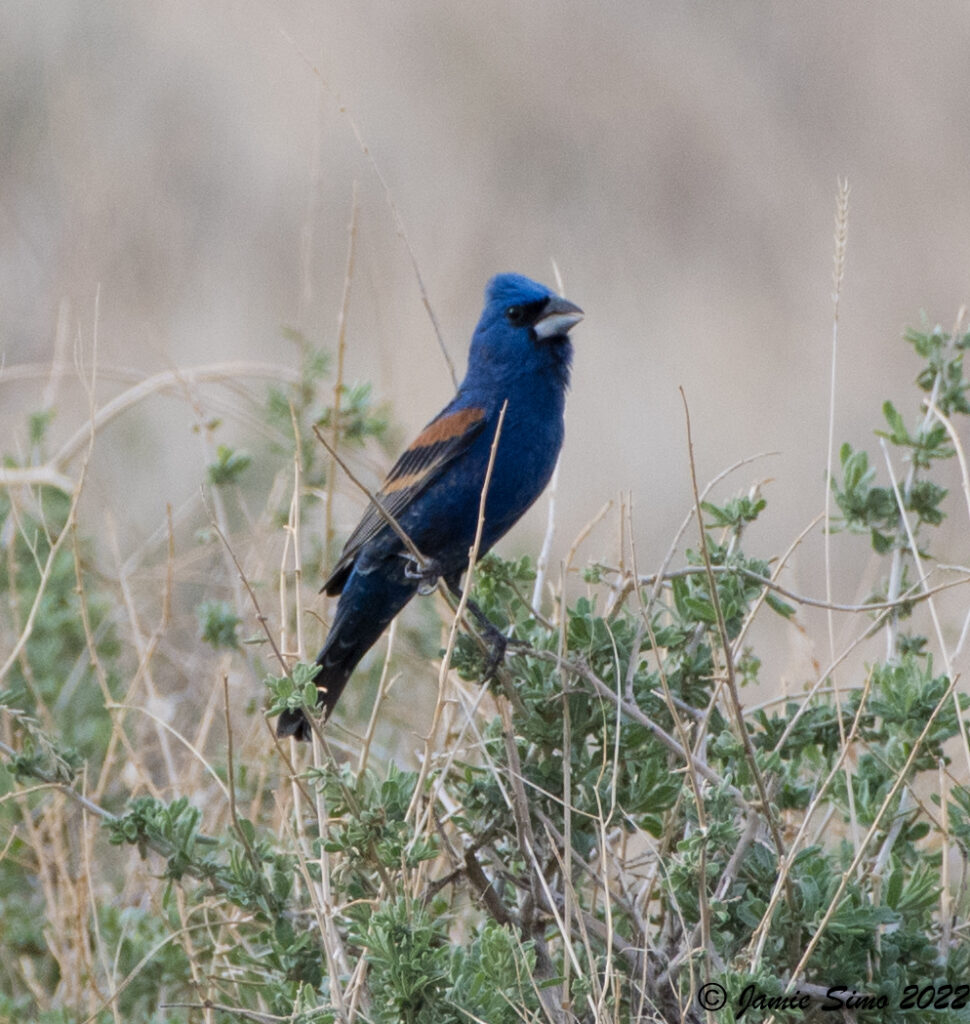Old Saint Vrain Road in Lyons, Colorado is a gem for birders owing to the fact that it is what is known as an “ecotone.” An ecotone is a transition zone between one habitat and another and tends to be very biologically active because of that mixing. Old Saint Vrain transitions between riparian, rocky cliffs, and drier hillside with shrubs and Ponderosa pine and birds from all three habitats can be found here.

On Saturday the 13th we met at the adjacent Picture Rock Trail parking lot for Heil Valley Ranch then walked the short distance down to Old Saint Vrain Road. The scrubby environs around the parking lot are ideal for Blue-gray Gnatcatchers, which we heard, but didn’t see. These small blue-gray (hence the name) birds are slightly smaller than a Bushtit with longer legs and bill and a tail they tend to hold up like a wren. They have a conspicuous white eye-ring and make a distinctive scratchy squeak call.
One of the houses along Old Saint Vrain Road has bird feeders up all year long and, in late summer, can play host to all four species of hummingbirds likely to be seen in Colorado. Along with the usual Broad-tailed and Black-chinned Hummingbirds, which breed along the Front Range, we saw one female Rufous Hummingbird.

Along with the usual cohort of Wild Turkeys, including some young of the year, the highlights of the morning were probably the Blue Grosbeaks and Lazuli Buntings. We had a spectacularly deep blue Blue Grosbeak male singing his heart out as well as what I mistakenly labeled an adult male molting into duller winter plumage. I’ve since discovered that, upon reaching adulthood, male Blue Grosbeaks retain their blue feathers all year. Therefore, the reddish-brown bird we saw was either a first year male not yet in adult plumage or a female. Grosbeaks are named for their big, conical beaks (gros=large), which they use to crack seeds.

Like their relative the Blue Grosbeak, Lazuli Buntings can also be found in shrubby open areas. The males remind me of sherbet with their orange, white, and electric blue coloring. We had a quick glimpse of an adult male along with better views of a either a young male or a female, which was more cinnamon-hued with hints of blue.
Old Saint Vrain Road never disappoints, even during the dog days of summer! In all we had 32 species.
Old Saint Vrain Rd
32 species (+1 other taxa)
- Wild Turkey 8
- Rock Pigeon (Feral Pigeon) 6
- Eurasian Collared-Dove 2
- Mourning Dove 2
- Black-chinned Hummingbird 2
- Rufous Hummingbird 1
- Broad-tailed Hummingbird 10
- Red-tailed Hawk 1
- Downy Woodpecker 1
- Northern Flicker 1
- Northern Flicker (Yellow-shafted x Red-shafted) 1
- Western Wood-Pewee 3
- Cordilleran Flycatcher 1
- Say’s Phoebe 1
- Blue Jay 5
- Black-capped Chickadee 4
- Barn Swallow 2
- White-breasted Nuthatch 1
- Pygmy Nuthatch 1
- Blue-gray Gnatcatcher 1
- House Wren 2
- European Starling 1
- Gray Catbird 4
- American Robin 1
- Cedar Waxwing 12
- House Finch 9
- Lesser Goldfinch 7
- American Goldfinch 4
- Spotted Towhee 1
- Yellow-breasted Chat 1
- Western Tanager 1
- Blue Grosbeak 2
- Lazuli Bunting 3


Comments
Write Comment